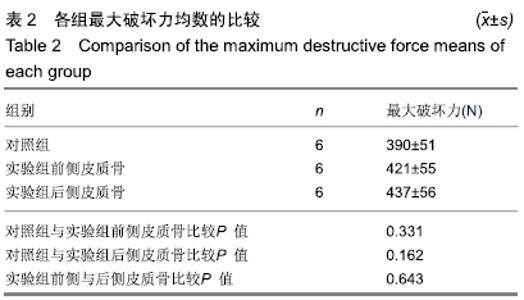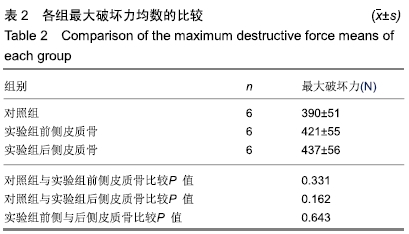[1] RENFREE KJ, WRIGHT TW.Anatomy and biomechanics of the acromioclavicular and sternoclavicular joints.Clin Sports Med.2003;22(2):219-237.
[2] ZHANG C, LIN L, LIANG J, et al.Efficacy analysis of a novel sternoclavicular hook plate for treatment of unstable sternoclavicular joint dislocation or fracture.J Orthop Surg (Hong Kong). 2017;25(1):1-7.
[3] JAGGARD MK, GUPTE CM, GULATI V, et al.A comprehensive review of trauma and disruption to the sternoclavicular joint with the proposal of a new classification system.J Trauma. 2009;66(2):576-584.
[4] BATTAGLIA TC, PANNUNZIO ME, CHHABRA AB, et al. Interposition arthroplasty with bone-tendon allograft: a technique for treatment of the unstable sternoclavicular joint.J Orthop Trauma.2005;19(2):124-129.
[5] RENFREE KJ, WRIGHT TW.Anatomy and biomechanics of the acromioclavicular and sternoclavicular joints.Clin Sports Med.2003;22(2):219-237.
[6] 杨琨,吴天昊,李根,等.胸锁关节的解剖学及生物力学特征[J].中国组织工程研究,2018,22(11):1695-1700.
[7] 李昌坤,张斌,杨先武,等.锁骨钩钢板治疗胸锁关节前脱位八例[J].中国修复重建外科杂志,2011,25(1):119-120.
[8] 牟遐平,孔建中.锁骨钩钢板与张力带固定治疗胸锁关节脱位的病例对照研究[J].中国骨伤,2010,23(9):668-671.
[9] 谢志云,王小勇,朱祖巍,等.胸锁关节功能重建的临床病例分析[J].中国骨与关节损伤杂志,2014,29(11):1162-1163.
[10] 刘攀,袁加斌,刘仲前,等.锁骨钩钢板在胸锁关节脱位治疗中的应用[J].中国骨伤,2015,28(8):730-732.
[11] 吴建军,梁桂清,肖展豪,等.锁骨钩钢板治疗胸锁关节前脱位[J].中国矫形外科杂志,2009,17(14):1119-1200.
[12] FRANCK WM, JANNASCH O, SIASSI M, et al. Balser plate stabilization: an alternate therapy for traumatic sternoclavicular instability.J Shoulder Elbow Surg.2003;12(3): 276-281.
[13] 刘广辉,赵梓汝,包国玉.锁骨钩钢板治疗不稳定性胸锁关节脱位[J].中华创伤骨科杂志,2008,10(11):1028-1030.
[14] SPENCER EE, KUHN JE.Biomechanical analysis of reconstructions for sternoclavicular joint instability.J Bone Joint Surg.2004;86-A(1):98-105.
[15] BAK A, FOGH K.Reconstruction of the chronic anterior unstable sternoclavicular joint using a tendon.autograft:medium term to longterm follow-up results.J Shoulder Elbow Surg.2014;23(2):245-250.
[16] O’REILLY-HARBIDGE SC, BALOGH ZJ.Three-point suture anchor repair of traumatic sternoclavicular joint dislocation. ANZ J Surg.2013;83(11):883-886.
[17] Guan JJ, WoK BR.Reconstruction for anterior sternoclavicular joint dislocation and instability.J Shoulder Elbow Surg. 2013; 22(6):775-781.
[18] 董佩龙,唐晓波,王健.重建锁定钢板治疗胸锁关节脱位的近期疗效[J].中国修复重建外科杂志,2013,27(12):1450-1452.
[19] 朱晨,孔荣,方诗元,等.T形钢板内固定治疗胸锁关节脱位与锁骨近段骨折[J].临床骨科杂志,2010,13(6):666-668.
[20] 周望者.T形钢板内固定治疗胸锁关节前脱位[J].中国骨伤,2009, 22(3):234.
[21] 郑光磊,沈晓强,王荣,等.改良锁定钢板治疗胸锁关节脱位的疗效[J].临床骨科杂志,2018,21(5):568.
[22] 林旺,林伟民,王盈盈,等.锁骨钩钢板与锁定钢板内固定术治疗不稳定性胸锁关节前脱位效果比较[J].山东医药, 2015,55(45): 87-88.
[23] 樊军,罗意,万革,等.克氏针张力带与锁骨钩钢板固定治疗胸锁关节前脱位63例的临床分析[J].重庆医学, 2015,44(22): 3129-3131.
[24] 曾宪华,邹志强,高洋,等.胸腔镜下治疗克氏针折断游走至左上纵膈及右胸腔1例[J].重庆医学,2015,44(5):719-720.
[25] 赵继,蔡贤华,胡昊,等.T型钢板与韧带重建治疗陈旧性胸锁关节脱位对比研究[J].临床外科杂志, 2014,22(2):122-124.
[26] 潘超,瞿绪勇,吴学仪,等.胸锁钩接骨板治疗胸锁关节脱位及锁骨近端骨折[J].实用骨科杂志, 2015,21(1):68-70.
[27] SCHEMITSCH LA, SCHEMITSCH EH, MCKEE MD.Bipolar clavicle injury: posterior dislocation of the acromioclavicular joint with anterior dislocation of the sternoclavicular joint: a report of two cases.J Shoulder Elbow Surg. 2011;20(1): e18-22.
[28] CRISTOFOLINI L,VICECONTI M, CAPPELLO A, et al. Mechanical validation of whole bone composite femur model. J Biomech.1996;29(4):525-535.
[29] HEINER AD, BROWN TD.Structural properties of a new design of composite replicate femurs and tibias.JBiomech. 2001;34(6):773-781.
[30] SOMMERS MB, FITZPATRICK DC, MADEY SM, et al.A Surrogate Long-Bone Model with Osteoporotic Material Properties for Biomechanical Testing of Fracture Implants.J Biomech.2007;40(15):3297-3304.
[31] 姜滔,吕一,沈建国,等.Sawbones人工合成骨和尸体骨的生物力学比较研究[J].中医正骨,2010,22(5):15-18.
[32] 张布和,张永东,田耕国人胸骨的形态测量[J].解剖学研究,2002, 24(2):94-95.
[33] 王亦璁,姜保国.骨与关节损伤[M].5版.北京:人民卫生出版社, 2012:704-705.
[34] IANNOTTI JP, WILLIAMS GR.Disorders of the shoulder: diagnosis and management.PA:Lippincott Williams& Wilkins,1999:765-813.
[35] 程方东.胸骨柄的生物力学研究[D].四川:西南医科大学;泸州医学院,2008.
|

